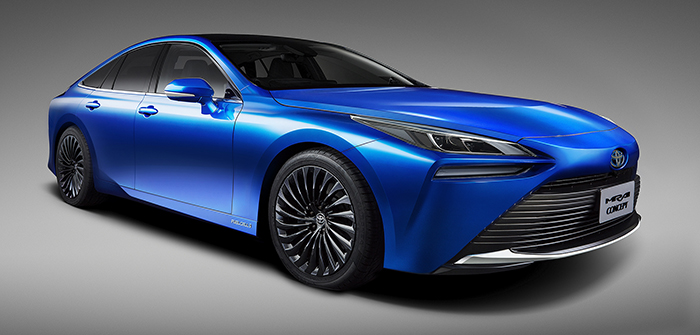Toyota has revealed the second-generation Mirai. Rebooted as a premium sedan, the new Mirai has been equipped with an improved fuel cell system and increased hydrogen storage capacity.
Due to go on sale in late 2020, the FCEV promises a 30% increase in range as well as a more powerful and quieter driving experience than its predecessor.
At its core the Mirai is an EV, but it generates its own electricity onboard from hydrogen and oxygen, with water as the only tailpipe emission. Toyota claims it takes five minutes to fill-up at an SAE-conforming hydrogen fueling station in California or Hawaii.
“We have pursued making a car that customers feel like driving all the time,” said Yoshikazu Tanaka, chief engineer for the Mirai. “I want customers to say, ‘I chose the Mirai not because it’s an FCEV, but because I really wanted this car, and it just happened to be an FCEV.’”
Toyota remains committed to hydrogen fuel cell technology as a powertrain with potential. More FCEVs are planned to enter the market over the next few years as the cost, size and weight of fuel cell systems continue to decrease and the fueling infrastructure grows.


